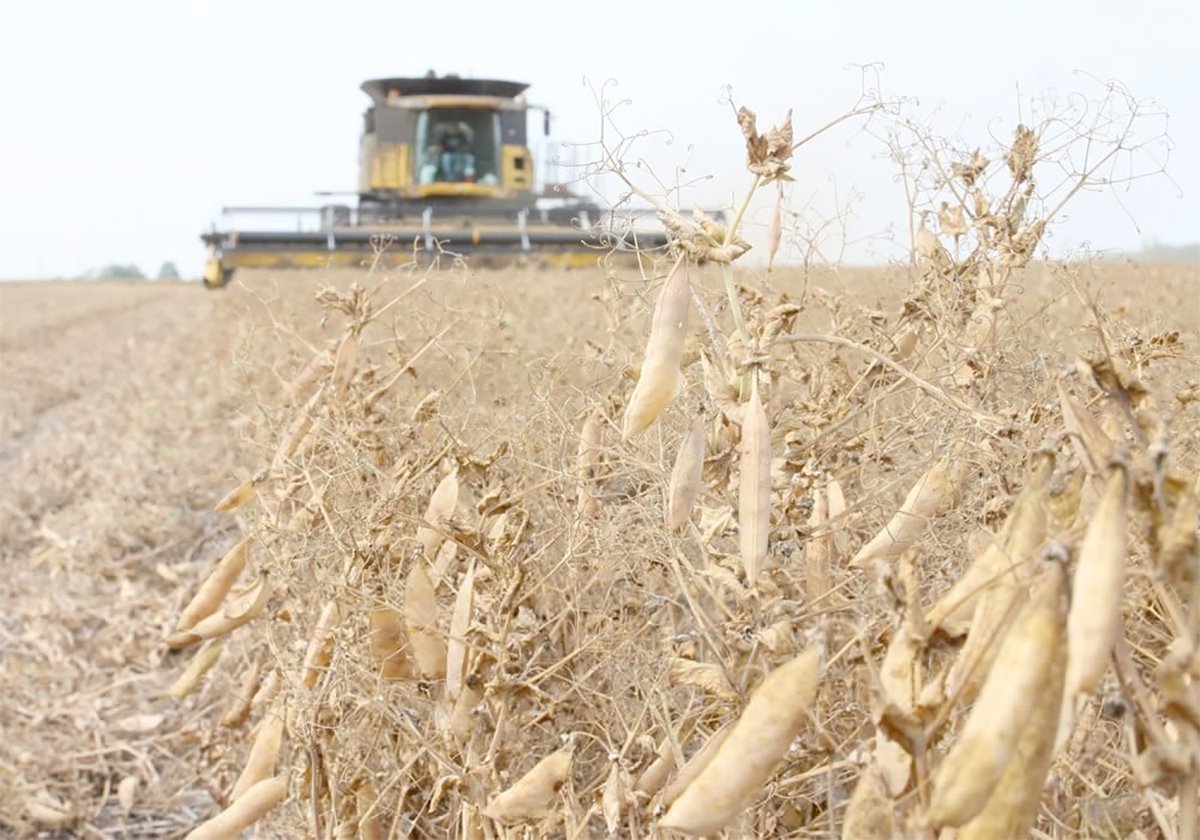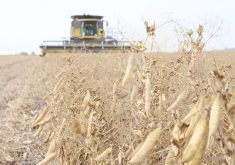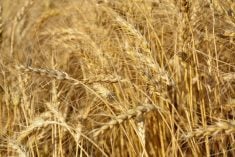Rust is eating away at Western Canada’s most popular wheat variety.
AC Barrie, which accounted for almost one-third of prairie wheat acreage last year, is proving susceptible to several new races of leaf rust on the Prairies.
That, combined with the late seeding of this year’s crop and ideal climatic conditions, has allowed the disease to take a bite out of wheat growers’ yields.
“We got a lot of problems with leaf rust on Barrie this year,” said Brent McCallum, a plant pathologist at Agriculture Canada’s Winnipeg research centre.
Read Also

Chinese, Indian tariffs take toll on pea prices
The disruption of pea exports from Canada’s largest customers will likely result in slow pea exports for the remainder of the crop year.
McCallum said a survey conducted by the research centre indicates that leaf rust on all wheat, not just Barrie, is the worst in 20 years.
Farmers in rust-affected areas are suffering yield losses ranging as high as 20 percent this year. Most years it’s around five percent.
When Barrie was released in 1994, it was fully resistant to leaf rust, thanks to a gene known as LR16 that was bred into a number of Canadian and American varieties, including Columbus and AC Majestic.
But the cagey leaf rust pathogen has changed in the intervening years and that gene no longer provides protection.
“Now it’s able to attack AC Barrie,” said McCallum. “We’ve sort of seen that happening for a number of years now, but this year it was really evident because we had a lot of leaf rust around and Barrie looked fairly susceptible.”
American borne
Every year, rust spores are blown north from the United States, eventually infecting fields in southern Manitoba and southeastern Saskatchewan.
The spores usually arrive in late May or early June. If moisture conditions are right, the spores germinate and infect the leaf. After about 10 or 12 days, the infection ruptures, releasing more spores, which infect more plants.
Because so much of this year’s crop was seeded late, the disease gained a much stronger foothold than usual, establishing itself in the crop during the early stages of development.
“Usually our crops are getting fairly mature by the time the epidemic gets very severe, but this year’s crop was so late that it hit when it was the most potent,” said McCallum.
Several other factors conspired to make this a bad year for rust.
The amount of rust damage in Canada is driven to a large degree by the situation in the U.S. This was the worst rust year in the past 25 years in the upper Midwest, so a lot of spores came into the Canadian Prairies.
In addition, high moisture and humidity levels throughout much of southern Manitoba and Saskatchewan provided ideal conditions for infection.
Leaf rust can be controlled with fungicide, but Ag Canada wheat breeder Ron DePauw said at a cost of $20 an acre, it’s not cost effective.
DePauw, who developed AC Barrie at the Swift Current, Sask., research centre, said farmers concerned about leaf rust may want to consider other varieties that are still resistant to the new races of the disease, including AC Elsa, AC Intrepid, AC Domain and AC Cadillac.
Plant breeders and pathologists are working to incorporate new genes into popular varieties like Barrie to upgrade rust resistance.
“We knew this was a threat to happen and we’ve been working on it,” said DePauw. “It’s something we always have to be building on, to have as much genetic resistance built in as possible.”
McCallum said that while this year’s situation was unusual, it may lead wheat growers in rust-prone areas to reassess what they plant next year.
“Farmers have to weigh the overall package ,” he said. “It may be poor for leaf rust but it may have other good quality characteristics. They have to make the decision whether they’re worried enough about leaf rust to make the switch from AC Barrie to another variety.”
While acknowledging that many farmers were forced to seed late, DePauw said this year’s experience emphasizes the importance of seeding early, especially if planting a variety that is susceptible to new races of rust.














